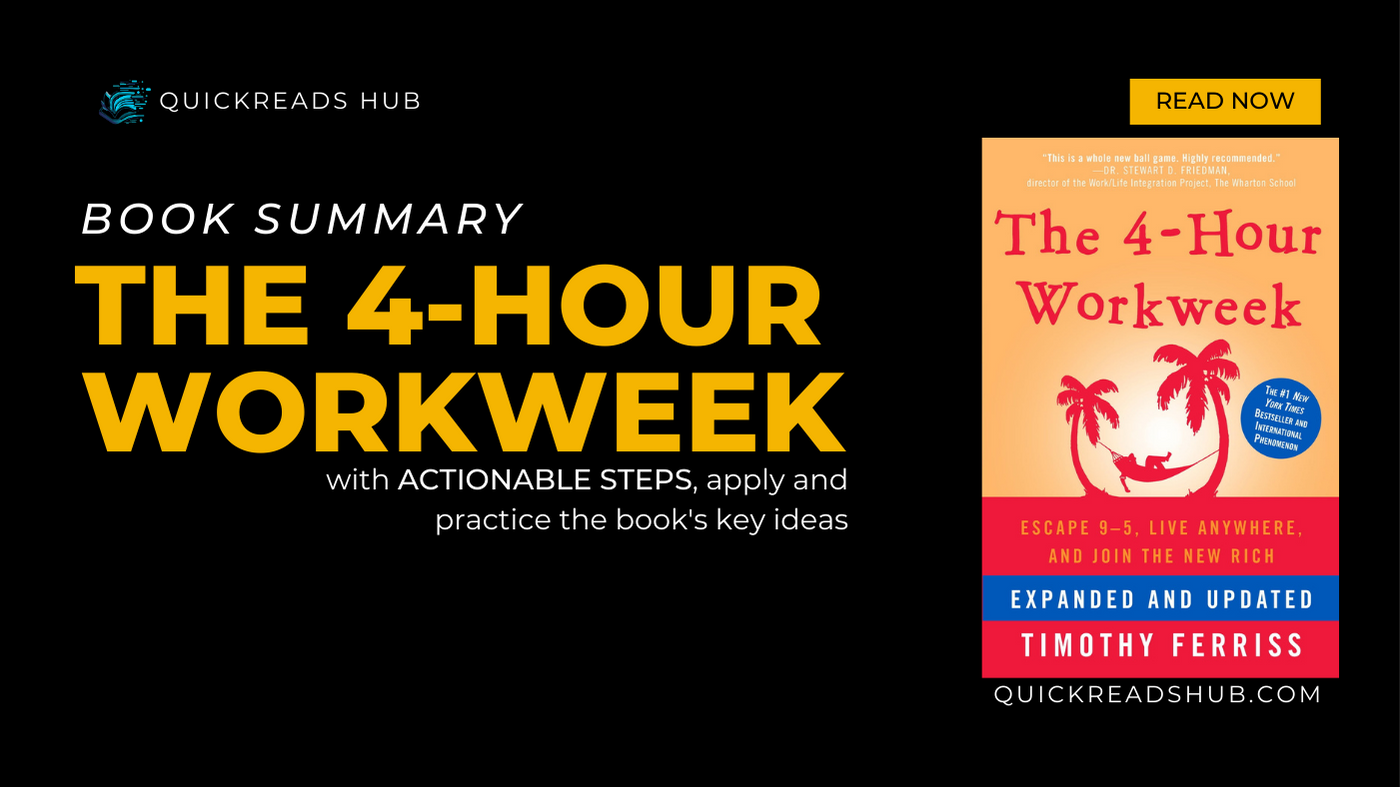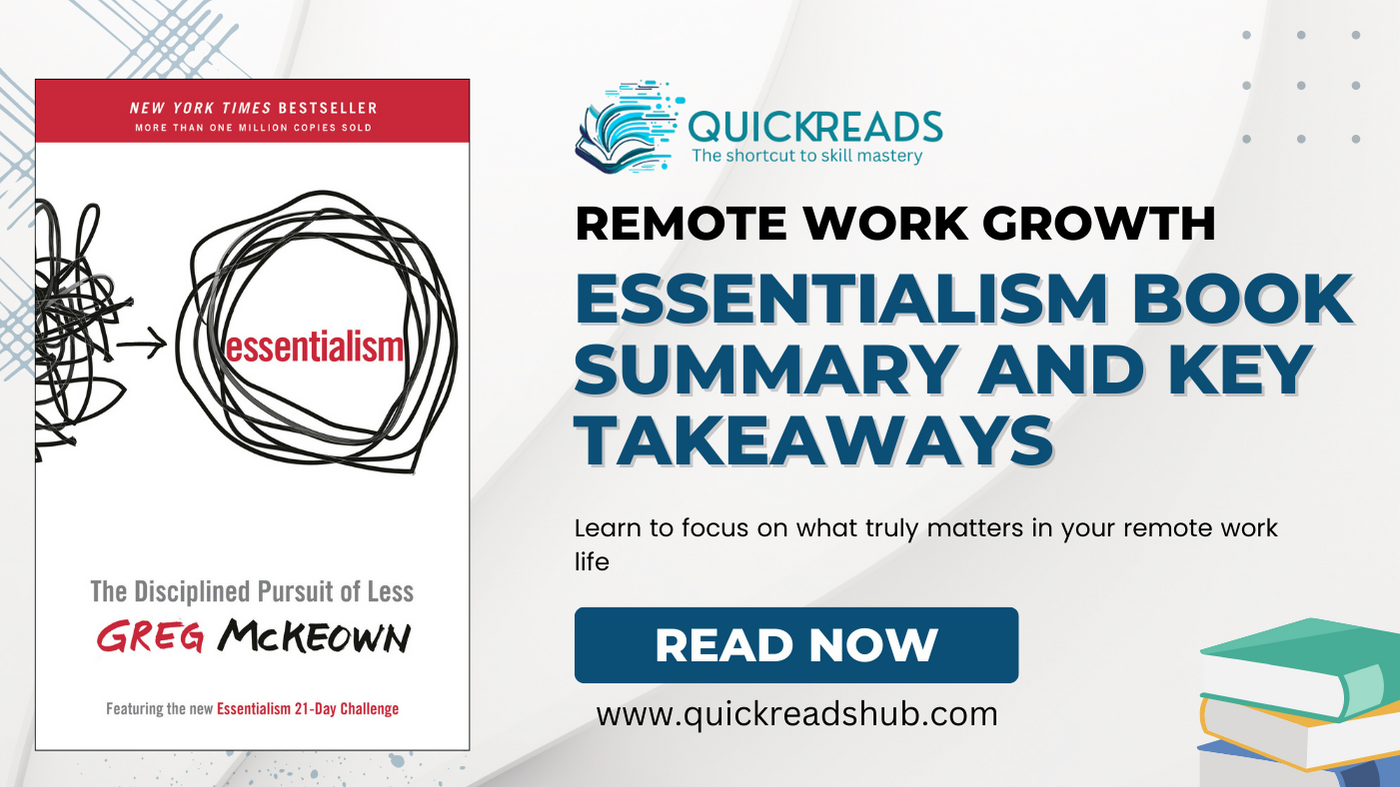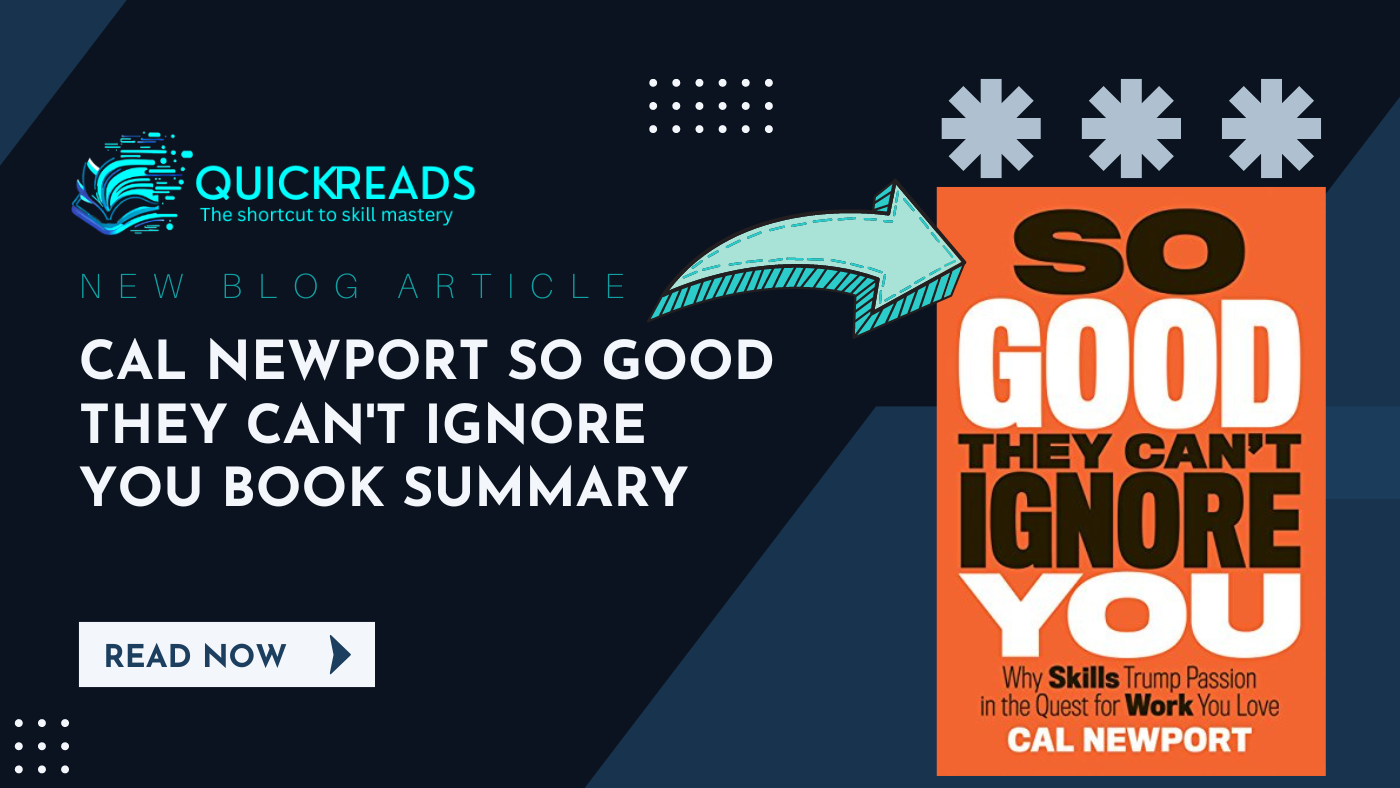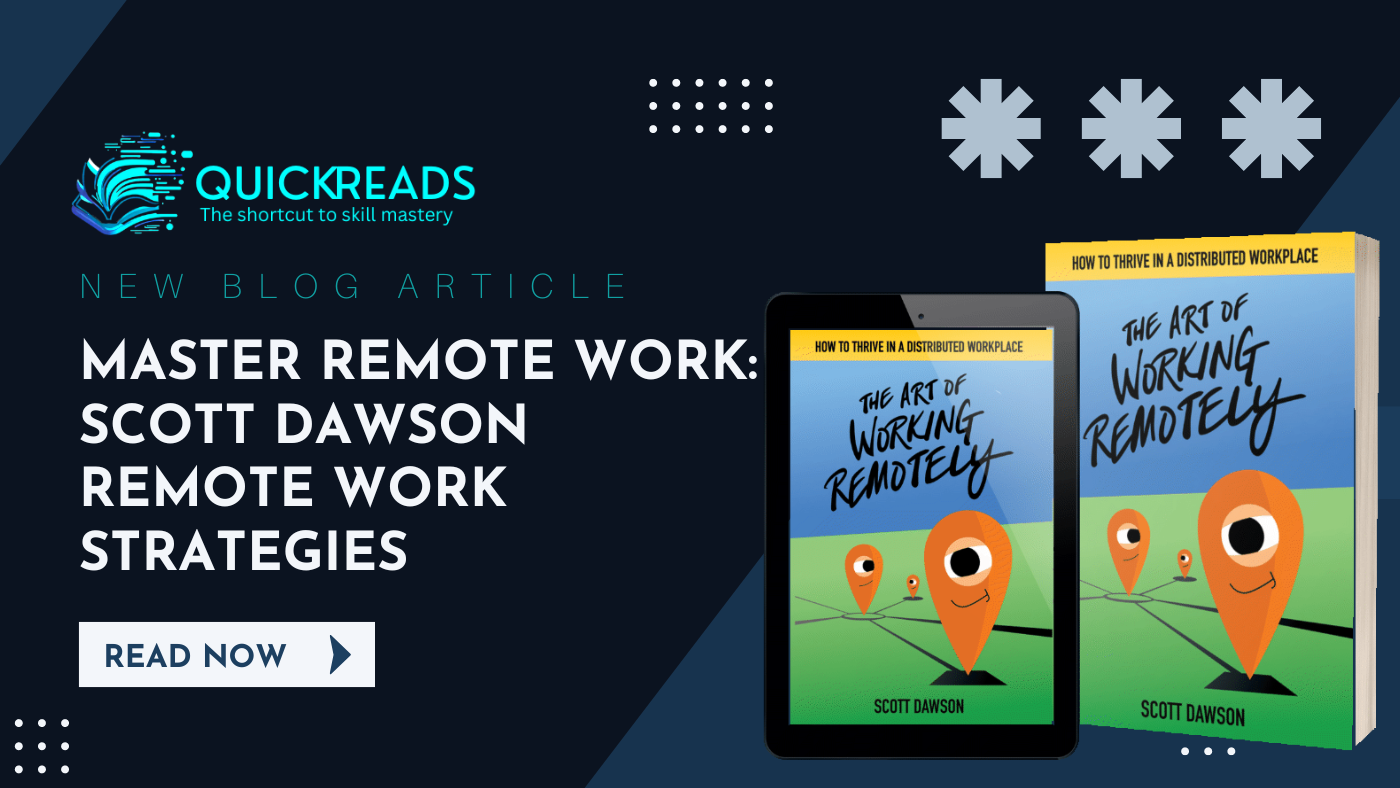I. Introduction
The world of remote work has seen a significant shift in recent years, largely influenced by the groundbreaking book “The 4-Hour Workweek” by Timothy Ferriss. Ferriss, an exceptional writer, entrepreneur, and public speaker, introduced a revolutionary concept that reframes our understanding of work-life balance.
The 4-Hour Workweek Summary presents a compelling alternative to the traditional 9-5 grind, proposing an innovative approach that emphasizes flexibility and efficiency. Timothy Ferriss challenges readers to question societal norms, redefine their objectives, and design a lifestyle that promotes personal fulfillment.
In this blog post, we’ll delve into The 4-Hour Workweek Summary and Timothy Ferriss‘s Book Insights, exploring the key themes, concepts, and actionable insights provided by Ferriss. We’ll also shed light on how these principles can enhance productivity and satisfaction for remote workers.
Hold on to your seats as we venture into the world of Timothy Ferriss, where the unconventional becomes the norm. This journey towards a more balanced and fulfilling work-life begins here. Stay tuned!
II. The Essence of “The 4-Hour Workweek“

At its core, “The 4-Hour Workweek” champions a fresh and audacious perspective toward work and life. In essence, Timothy Ferriss conveys that living a fulfilling life isn’t tied to endless hours of toiling in the workspace. He suggests that the crux of a satisfying existence lies within efficient time management, strategic work, and the courage to break free from the conventional.
The primary theme of “The 4-Hour Workweek” revolves around the DEAL acronym – Definition, Elimination, Automation, and Liberation. Ferriss invites readers to define their goals, eliminate unproductive tasks, automate their workflow, and liberate themselves from traditional work norms. This philosophy aims to improve work efficiency and provide more time for personal pursuits.
In the following sections of this blog post, our exploration into “The 4-Hour Workweek Summary” will offer a deeper dive into each element of DEAL. We will also unravel how Timothy Ferriss‘s book insights pave the way for a more rewarding work-life balance, especially for the digital nomads among us. Stay tuned as we further delve into Ferriss’s game-changing strategies!
III. The 4-Hour Workweek Summary
The 4-Hour Workweek Summary revolves around the DEAL acronym, a significant aspect of Ferriss’s revolutionary approach to work and life. Let’s break it down.
Definition: Defining Your Objectives
Start by knowing what you want. This step entails a deep understanding of your goals and aspirations. Ferriss encourages the reader to be clear and specific about what they want their life to look like. Are you yearning for more time to spend on hobbies or with loved ones? Perhaps you want to travel or pursue a side business? Having a clear vision of your goals is the starting point of the 4-Hour Workweek journey.
Elimination: Increasing Efficiency by Eliminating Unnecessary Tasks
Next is the art of elimination. Timothy Ferriss advocates for increased efficiency by identifying and eradicating unproductive tasks. He believes that being busy does not necessarily equate to being productive. Learning to distinguish between what’s critical and what’s not is an essential skill in realizing the 4-hour workweek.
Automation: Outsourcing Non-Critical Tasks
Automation involves delegating non-critical tasks to free up your time. Ferriss elaborates on outsourcing mundane tasks to virtual assistants or automated systems, allowing you to focus on tasks that bring the most value. Automation is a key strategy in achieving the dream of working less while accomplishing more.
Liberation: Embracing the Mobile Lifestyle
Finally, we have liberation – the freedom to work from anywhere at any time. As remote workers or digital nomads, embracing the mobile lifestyle is an integral part of this strategy. It’s all about designing a life that allows you to enjoy your newfound time and financial freedom.
In the context of the 4-Hour Workweek philosophy, DEAL is a roadmap to achieving a lifestyle that values time and mobility over financial gain. Each component complements the other, forming a synergistic approach towards a fulfilling work-life balance. Now that we’ve grasped the core principles of Ferriss’s philosophy let’s delve into the book’s key takeaways.
IV. Key Takeaways from The 4-Hour Workweek Summary

Diving into “The 4-Hour Workweek Summary” offers a plethora of insights that have the potential to transform your work-life balance drastically. Let’s have a look at some of these essential takeaways.
- Time and Mobility: More Than Just Money
Timothy Ferriss propels us to reconsider our conventional understanding of wealth. He believes that time and mobility are equally if not more, significant assets as compared to money. It’s not always about earning more but rather optimizing what you have to gain maximum freedom and flexibility. Remember, you can always earn back money, but lost time is irretrievable.
- Lifestyle Design: Charting Your Path
Ferriss introduces a new concept – lifestyle design. He urges readers to create a life that they don’t need a vacation from, rather than postponing enjoyment to a future that might never come. In essence, don’t just earn a living, design your life.
- Eliminate Distractions, Focus on Productive Actions
An integral part of the 4-Hour Workweek is the focus on efficiency. Ferriss encourages readers to do away with non-productive actions and to channel their energy towards tasks that bring about significant impact. Remember, it’s not about how much you do but what you do.
- Outsourcing: Leverage the World
In the 4-Hour Workweek, outsourcing is an essential tool in automating and streamlining your tasks. By outsourcing non-essential tasks, you have more time to focus on what matters most. It’s all about working smarter, not harder.
These insights not only shed light on Timothy Ferriss‘s revolutionary approach but also serve as practical tips that you can integrate into your work and personal life. The next time you find yourself overwhelmed, revisit these insights and see how you can design your own 4-hour workweek.
V. Timothy Ferriss Book Insights
Let’s take an even closer look at how the concepts introduced in “The 4-Hour Workweek” can revolutionize our understanding of work and lifestyle.
- Remote Work: Experience More than a Desk
As a remote worker, the liberty to work from anywhere can seem liberating. Following the insights from Ferriss’s book, remote work isn’t just about flexible hours—it’s about crafting a lifestyle that fosters productivity, creativity, and personal happiness. - Breaking Conventional Chains
The most significant insight from Timothy Ferriss’s book is perhaps the breaking down of conventional chains. He urges us not to remain confined to a 9-5 job structure but to explore the possibilities beyond. He pushes readers to question existing work norms and come up with solutions tailored to their personal needs and lifestyle. - New Age Entrepreneurship
Ferriss also champions the idea of new-age entrepreneurship—building businesses that provide passive income while affording you the time to pursue your passions. For remote workers and digital nomads, this concept proves invaluable. It offers a roadmap to achieving financial freedom without sacrificing personal time and space. - Value of Experiences Over Possessions
Another profound insight revolves around the value of experiences over possessions. Ferriss underscores that filling life with rich experiences matters more than acquiring material possessions—a philosophy that resonates deeply with many remote workers. - The Fear Setting Exercise
Timothy Ferriss’s fear-setting exercise is another highlight. It’s a practical method for overcoming fears and anxieties about taking the next step—be it venturing into a new business, shifting to a remote working lifestyle, or embarking on a long-desired journey. This exercise is designed to make you confront your fears and break them down into manageable parts, allowing you to take that leap of faith. - Redefining Retirement
Ferriss provides an interesting perspective on retirement, suggesting that we need not wait until our old age to enjoy life. Rather, we should integrate mini-retirements into our lives at regular intervals. This innovative approach can help remote workers manage burnout while keeping their creative juices flowing.
Timothy Ferriss‘s insights challenge traditional work and lifestyle paradigms, urging us to design lives that bring us joy and fulfillment while still meeting our financial needs. It’s not just a book—it’s a catalyst for personal transformation.
VI. How The 4-Hour Workweek Applies to Remote Work

Through my lens as a remote worker, let’s unpack how the principles of “The 4-Hour Workweek” can effectively enhance productivity and satisfaction in the realm of remote work.
- Effective Time Management: An Art to Master
As a remote worker, time management can be a challenge. You’re juggling tasks, managing expectations, and striving to maintain a healthy work-life balance. The concept of defining objectives and eliminating unnecessary tasks—as highlighted by Ferriss—can be a game-changer. By focusing on high-value tasks, we’re able to better manage our time and optimize our work output.
- Empowering with Automation: Outsource for Efficiency
Embracing automation and outsourcing non-critical tasks can greatly boost your efficiency. As a remote worker, I’ve found platforms like virtual assistants or project management tools to be lifesavers. They allow you to automate routine tasks, freeing up time for strategic planning and high-value activities.
- Liberation: The Freedom of a Mobile Lifestyle
One of the perks of remote work is the freedom to work from anywhere. Ferriss’s concept of liberation is all about leveraging this freedom to create a lifestyle that promotes personal satisfaction while maintaining productivity. Whether it’s working from a cozy cafe or a beachside cabana, the 4-hour workweek lifestyle encourages us to blend work and play, redefining the traditional boundaries of the workplace.
- Embracing the New Normal: Remote Work
Ferriss’s book, albeit written before the widespread adoption of remote work, perfectly encapsulates the potential of this new work paradigm. The principles of defining, eliminating, automating, and liberating resonate strongly with the experiences of remote workers, offering practical strategies for navigating the unique challenges of this work setup.
- Balance: The Key to Remote Work Success
Perhaps the most significant lesson I’ve gleaned from “The 4-Hour Workweek” as a remote worker is the importance of balance. Ferriss advises us to not wait for retirement to start living. By incorporating mini-retirements, managing time effectively, and embracing automation, we can live more fulfilling lives without compromising our career goals.
“The 4-Hour Workweek” offers a revolutionary approach to work that fits well with the ethos of remote work. Implementing its principles can help us tap into the full potential of remote work, leading to a more balanced and rewarding professional life.
VII. Conclusion
VII. Conclusion: Embracing the Principles of The 4-Hour Workweek
Reflecting on Timothy Ferriss‘s insights from “The 4-Hour Workweek,” we are propelled to reconsider our work and life paradigms. We are challenged to think about how we manage time, streamline our tasks, and truly integrate work into the lifestyle we design. As we draw this summary to a close, the key principles—defining, eliminating, automating, and liberating—continue to reverberate.
In the realm of remote work, these principles take on a whole new dimension. The way we utilize our time, the tasks we choose to focus on, and the balance we strike between work and leisure all contribute to the success and satisfaction we derive from our professional lives. And in the sphere of remote work, these elements become even more critical.
By defining our objectives, we align our efforts with our goals, maximizing productivity. By eliminating distractions, we ensure that our focus is on the tasks that matter most. Automation helps us delegate non-critical tasks, freeing up time for strategic activities. And liberation—the freedom to work from anywhere—can make work more fulfilling.
As remote workers, the potential to apply Ferriss’s insights to our work routines is vast. From time management to work-life balance, the principles of “The 4-Hour Workweek” offer practical strategies for navigating the unique challenges of remote work.
As we wrap up, remember that the path to a 4-hour workweek might not be overnight. But by taking incremental steps towards embracing these principles, we can transform our work experiences into something more enriching and balanced. The 4-hour workweek is not just about working less—it’s about working smarter, and more importantly, living better. As Ferriss points out, “Life doesn’t have to be so damn hard.” So let’s start redesigning our work lives, one hour at a time.
VIII. Call to Action and Actionable Items
Your journey to a balanced and fulfilling work life starts here. Don’t just sit on these insights—put them into action. Here are a few actionable steps you can take today, inspired by Timothy Ferriss‘s “The 4-Hour Workweek“:
Define Your Objectives: Determine what you want from your work and life. What does your ideal work week look like? What are your career and personal goals?
Eliminate Unnecessary Tasks: Review your work tasks. Are there any that do not contribute to your goals? If so, consider eliminating them.
Automate What You Can: Look for opportunities to automate or delegate tasks. This could mean using productivity tools, hiring a virtual assistant, or outsourcing tasks.
Embrace Liberation: Seek ways to work from anywhere. This could be a home office, a coffee shop, or even a beach in Bali!
We encourage you to share your own experiences with implementing these steps. Comment below and tell us about your journey towards a 4-hour workweek. Have you found specific techniques that work for you? Or perhaps you’ve encountered challenges along the way. Let’s start a conversation and learn from each other.
If you haven’t read “The 4-Hour Workweek” yet, consider doing so. Ferriss’s book provides a wealth of insights beyond what we’ve covered here. It’s a treasure trove for anyone looking to improve their work life and personal productivity.
Remember, the journey towards a 4-hour workweek is not a sprint—it’s a marathon. And like any marathon, it requires training, determination, and resilience. So let’s embark on this journey together and transform our work lives for the better.
Are you ready to reshape your work life? Start today!





